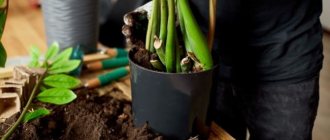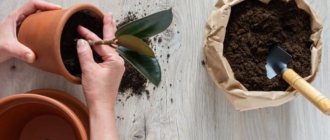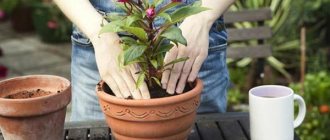Castor oil for watering indoor flowers
Castor oil is obtained from the seeds of the castor bean or northern palm. This plant is listed in the Guinness Book of Records website as the most poisonous in the world. The culture was found a long time ago, but an antidote to it has not yet been invented. All parts of the castor bean are dangerous, but it is the seed that poses the greatest danger.
But in the process of production and use of castor oil, all the negative properties of the plant are eliminated, and the oil provides only benefits and fertilizer. Not so long ago, castor oil began to be used to feed plants at home: indoors and garden plants. After the correct manipulations have been made, the crops grow more actively, and the abundance of their flowering increases significantly.
A person must spray his garden or various vegetable gardens.
The product contains a lot of acids, especially the following:
- linoleic fatty acid (polyunsaturated);
- palmitic and stearic fatty acids;
- oleic and ricinoleic acids.
These are the main components and stimulants of the product, providing its beneficial properties.
Oil selection criteria
Castor oil is one of the few products that is not adulterated. When purchasing such a product, it is very difficult to purchase a fake. But you should still buy it in a pharmacy, and not in specialized aromatherapy stores. In some cases, you can also purchase it at a flower shop, which at the same time sells fertilizers and other delights for the garden.
Another important point when buying oil is its labeling. It might look like this:
- ricinus communis,
- oleum ricini,
- castor oil,
- agno casto
- Palma Christi.
One of the best for fertilizing plants is red castor mala; it is quite rare, but if you go to several pharmacies, you can find it. It is famous for its microelements and beneficial properties. You can spray the leaves of plants with a solution of castor oil and water, which will give them shine and a healthy appearance, but do not overdo it, as the plant can get chemical burns.
If you still doubt the authenticity of the oil, it is very easy to check. Pour plain water into a glass and drop some oil into it. It should not leave an oily film, otherwise this is a fake.
It is best to store oil in a cool, dark place. Once opened, it can be used for two years.
It is important to note that, as a rule, allergic reactions to the product are not observed. But it’s still worth working with it with gloves.
What are the benefits of castor oil for plants?
After properly feeding the plant with castor oil, the following positive changes in crop growth are observed and carried out, for example:
- the growth rate of plants and leaves increases, buds also appear faster, their size becomes larger;
- known damaged instances are restored faster;
- the crop will better consume useful components from the soil mixture;
- the plant gets sick less due to enhanced immunity and there are no pests;
- the appearance of green mass and flowers becomes much more attractive;
- the composition of the soil improves, water and air permeability increases;
- active growth and cell division begins;
- metabolism improves;
- roots absorb and deliver nutrients faster.
The name of this oil is castor
What is it used for?
As you know, 85% of castor oil consists exclusively of ricinoleic fatty acid, so the main effect on the plant body of this substance is almost entirely due to the action of this compound.
As you know, castor oil has an amazing antibacterial effect, due to which it is actively used against many genera of bacteria, viruses and fungi.
Once on the plant, this substance helps to inhibit the activity of pathogenic organisms, which leads to stimulation of the flower.
In addition, oil from castor bean fruits is characterized by a healing and stimulating effect on multicellular organisms, which leads to intensified metabolism, cell division and increased activity of cellular structures.
The general effect of the above features of castor oil on indoor flowers contributes to the overall health of the plant organism, and also accelerates its growth, improves metabolism and the quality of absorption of nutrients from the substrate. This is what leads to improved flower budding and the overall appearance of the plant.
When should you water flowers with castor oil?
The growth of indoor plants differs from garden plants in that it is limited by the size of the pot and, if necessary, it is not always possible to obtain nutrients, since the soil may already be poor. That is why indoor crops most often require additional feeding and fertilizer.
The use of castor oil and substances is justified and is not canceled in the following cases:
- the stems of the crop are thin and often break;
- leaf blades wither for no apparent reason;
- the green mass has become drooping, dull, new parts practically do not appear;
- the growth of plants and leaves stands still;
- the plants have undergone numerous transplants;
- the rhizome is damaged (in this case, you first need to remove the damaged parts and only then begin rehabilitation of the flower).
Hobbyists are responsible for the result of the fertilizer and that it accelerates the formation of antibacterial fruits
Help and comment! When the listed negative signs appear, the plant needs at least three months to fully recover, so the application of oil should not be stopped after 1-2 weeks. A competent restoration process of feeding is not a quick matter.
Recommended watering times
Healthy plants and shoots are fertilized once every 30 days as a preventive measure. It is better to do this during or after the soil blooms.
If the culture needs restoration, it is allowed to apply castor oil every two weeks for three months.
Useful properties for plants in the garden and at home
If you keep a northern palm tree in your garden, you can get rid of numerous pests. Caterpillars and harmful insects avoid it, much less lay eggs in the tissues of this plant.
Feeding flowers with castor oil, according to reviews from lovers of ornamental plants, leads to a rapid recovery of sick or wilted crops. This happens due to its antibacterial properties.
The substances cleanse the leaves and roots of pathogenic microorganisms, thereby giving the immune system a break and start working. As a result, the plant recovers naturally.
Beneficial microflora in pots is often absent due to improper fertilizing, because organic matter is not added to the soil. Only plant residues can provide food for soil bacteria. Fertilizing with mineral fertilizers alone leads to depletion of the humus layer and disease.
As a result of just one feeding:
- metabolism improves;
- the root absorbs nutrients and water better;
- intensive cell division and growth begins.
You can use castor oil for ornamental plants in open ground, as it is quite stable in the external environment and does not dry out. It is absorbed on the leaves, but does not form a film, that is, it does not interfere with respiration processes.
Video: Recipe for miraculous flower food
By adding the solution to the soil, pests leave it. Castor oil can be used to treat the mulch before laying it down for the winter so that the overwintering larvae of harmful insects die.
Carefully! If used incorrectly, there is a danger of causing burns to the leaf blades of ornamental crops.
How to choose plant oil
It is best to buy castor oil at pharmacies, where it is always in stock and is sold even at a reasonable price. It is better to avoid purchasing from retail outlets, since aromatic components that are harmful to the crop may be added to the oil. You should only choose a product of high quality.
Fertilizers will make cells stronger and stimulate disease prevention
The best option is cold-pressed oil (it retains the maximum amount of useful components). The product obtained after hot extraction is not purchased, because its production may involve the use of chemicals that are harmful to the crop and which can cause dormancy.
Fertilizer selection criteria
To check the authenticity of the product, a few drops of it are dissolved in clean water. If the product is natural, no oil film should form.
It is also important to pay attention to the shelf life of the product - it should not be more than two years. After the expiration date, there is no point in buying oil, since it will not give any effect, and in some cases it may even be harmful. Castor oil is stored in a cool place, ideally in the refrigerator.
Recipes for use
Castor oil can be used for both root and foliar feeding. There are several simple, but proven and effective recipes for preparing fertilizer.
Important! Remember that using oil in its pure form is under no circumstances allowed. Such manipulation will immediately lead to a chemical burn of the crop. Therefore, castor oil must be prepared before application. Castor oil can be combined with other types of oils, so the effect of applying fertilizer only increases.
It is important to spray correctly against diseases
First recipe:
- prepare 1000 ml of clean, settled water at room temperature;
- add a teaspoon of oil to it and stir everything thoroughly so that no oily greasy traces remain (it is better to immediately perform the procedure in a spray bottle);
- the plant is pre-irrigated with ordinary clean water (the green part, the buds, and the soil);
- after two hours after moistening with clean water, begin spraying with an oil composition (the more abundant the spraying, the more effective the procedure will be).
This treatment is suitable for the period of active vegetative growth and the budding period. In winter, it is better to abandon the procedure, since most crops at this time enter the dormant stage and are restored.
The second application option involves mixing castor oil with other components to increase the composition of nutritional components. Therefore, oil is added not to water, but to other useful solutions. Most often, the necessary ingredients are found in every home. For this you will need:
- mix the oil with the liquid that remains after defrosting the meat (5 ml of castor oil is enough for 100 ml of such liquid);
- combine the oil product with any organic components, including manure (in a ratio of 1:10);
- add butter to milk (a teaspoon of castor oil per liter of dairy product) - it is advisable to take milk at room temperature);
- mix the oil with wood ash and dissolve it all in warm, settled water.
Wear gloves when caring for the plant
It is recommended to choose one of the options and use it once a month for prevention and once every two weeks to restore the culture.
Recommended timing of castor oil fertilization
Prevention and treatment are carried out at the time of budding, since it is at this time that the plant is most vulnerable to disease. If the appearance of the flower has deteriorated and mold is visible on the soil, then spraying and watering can be done at any time. Constantly flowering ornamental plants can be grown once a month - with the formation of new buds.
Do not confuse the natural period of decline in vegetative activity with illness. With the onset of autumn, all indoor crops go into hibernation. It is undesirable to apply castor oil at this moment, as it can cause the death of the plant.
Instructions: how to water flowers with castor oil
In order for the fertilizer to bring maximum benefit, experienced gardeners advise adhering to the following instructions:
- carefully dissolve the oil in any liquid, avoiding contact of pure oil with parts of the flower (chemical burns cannot be avoided in this case);
- adhere to the recommended timing and dosage of fertilizer;
- use the prepared mixture immediately, shaking it well (it is not recommended to store the fertilizer);
- It is better to let the water for the recipe sit for a week;
- do not feed during suspended animation.
Advice from flower growers
The following recommendations in the article will help you use castor oil to its maximum benefit:
- the best time to apply castor oil is during budding at any hour;
- root fertilizing will give the maximum beneficial effect and should be carried out;
- Before using the oil solution, be sure to moisten the plant and soil;
- for full growth and development of the crop, it is enough to fertilize every month;
- You cannot store the finished mixture, as it loses all its beneficial properties;
- Before each spraying, the container with the solution and yeast is thoroughly shaken so that the oil particles do not collect into one mass;
- if the crop blooms and dries out only once a year, then fertilizer is applied only once a year;
- In no case should you increase or cancel the frequency of use or dosage, as this most often leads to clogging of the pores of the greens and a deterioration in the process of ricin photosynthesis.
Reference! Negative reviews most often appear due to mistakes by the flower growers themselves, so you should not overdo it with oil.
Set of substrate components Gardens of Aurica
It is impossible to do without a high-quality substrate when growing many orchids at home. Substratum lat. - base, soil, nutrient medium. Flower growers have their own names - soil mixture, soil.
"Academy of Floriculture" and LLC TD "Auriki Gardens". Very famous organizations not only in Russia. Among flower growers and gardeners.
Products of this production association:
- Ready-made soil mixtures for various plants;
- Substrates and components using coconut (coir);
- Decorative and mulching materials;
- Substrate components for making soil mixtures. Orchid owners are more interested in them.
Beginners in growing these beautiful flowers can find already prepared mixtures . Experienced flower growers are more attracted to components. They already select the desired composition, taking into account the characteristics of their pets. Take into account your conditions and experience.
Description and composition
- The substrates of “Aurica Gardens” are formed on the basis of turf soil. Natural components are added to them : Charcoal;
- Sphagnum moss;
- Coconut chips (shaved);
- Pieces of pine bark;
- Needles;
- Peat;
- Vermicompost;
- Their ratio depends on the type of orchid.
For what types is it recommended?
As part of one packaging option, the soil is suitable for the following orchids :
- Phalaenopsis;
- Dendrobium;
- Cattleya;
- Cumbria;
- Oncidium;
- Wanda.
Second option:
- Phalaenopsis;
- Cattleya;
- Paphiopedilum;
- Cymbidium;
- Miltonia.
Efficiency
- A fresh and properly selected substrate provides each type of orchid with comfortable conditions . Air access. Moisture entry and exit without stagnation;
- With proper watering and maintenance, 3 years is enough for a substrate without peat and soil. With their presence, it is produced faster - in 2 years.
Reviews
Irina. “I came across the products of Aurika Gardens by accident. Previously I bought from well-known companies. I urgently needed a substrate. I took it and was not offended. Qualitative. Everything that is indicated is what it is. I didn’t even carry out any soil treatment. The laboratory guarantees the naturalness of the components. I believed her. After planting, the plants feel great. But we had to save them.”
Gennady. “I don’t really like the Aurica Gardens substrates.” Or rather, their condition in the package. They come in some pieces. And so you can always choose the right components. Sod land doesn't really interest me. And I’m careful when it comes to coconut flakes. But my friends are happy with this company.”











